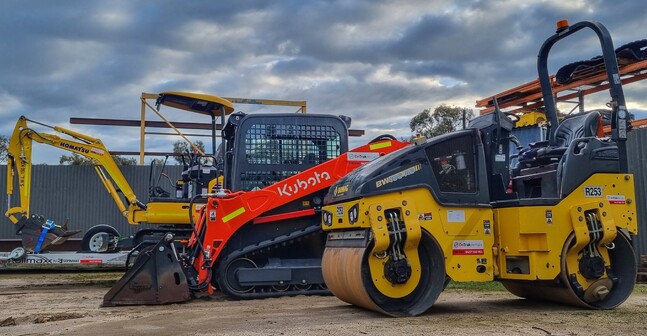Construction projects are often complex tasks requiring specialised machinery and skilled operators. There is a number of factors that have an affect on this and make every project different. Then there is also the need to manage the project timeline efficiently and to schedule, so everything is completed in a timely manner. But it’s also necessary to maximise equipment and resources efficiently.
This isn’t always an easy task, worksites are continually changing, with constant movement of workers and materials occurring around the worksite each day. In this environment, making a decision about the type of equipment a project needs and how the team may use it can vary from one day to the next.
We are here to help make this easier, read on for a few simple tips!
What is Dry Hire?
When hiring equipment on dry hire it will not include an operator to operate the machine for you. This hire option is significantly cheaper than wet hire as you don't need to pay for the operators time at your site. For some worksites, hiring equipment and an operator is essential (wet hire), but others may already employ skilled operators and only require the dry hire of the machine. It’s here that dry hire comes in – so what should you consider when dry hiring equipment?
What Is The Project Budget?
When going for dry hire, it often gives more control of estimated costs at the start of the project. This is due to most companies already employing an operator, and then hiring in the equipment once it is required on site. When you opt for wet hire, its an ‘all-in-one’ package that includes the equipment and operator, this may streamline the process with more experienced operators, but may also be more expensive due to minimum charges and delay the project if they aren't available at the right time. That’s why projects with tight budgets and timeframes can find the dry hire model very cost effective.
What Flexibility Is Required?
Many projects will have fixed timelines with particular tasks to be completed in certain steps for time critical work. While others, can be more flexible without time constraints - in this case, dry hire can provide greater flexibility and ease of completing each step in the project when it suits. Where delays on a project using a wet hire arrangement, the equipment and the operator – can be forced to just sit there and wait around for work to resume, thus adding to the project costs.
Operator Skill Requirements?
Certain pieces of machinery and equipment will require a higher level of skill and experience than others, depending on how simple the task is to be completed. When deciding on wet hire, the operator will come with the equipment and the necessary skills and experience to complete the task. When utilising dry hire, there’s the greater degree of freedom that comes from choosing or employing your own operator, but it’s still necessary to ensure they’re a suitable fit for the project.
Dealing With The Speed Humps
Construction projects can run smoothly without too many hiccups overall. But, it is likely something will go wrong or be delayed along the way - that’s just the nature of it. Instead of lamenting it, the key way to overcome the roadblocks is looking to make a plan in advance and deciding how to respond to them. This can be a particularly important consideration regarding dry hire - for example, if your operator was to become sick - you would have a backup plan in place to get another worker and not waste time and money by having the hired equipment sit idle.
